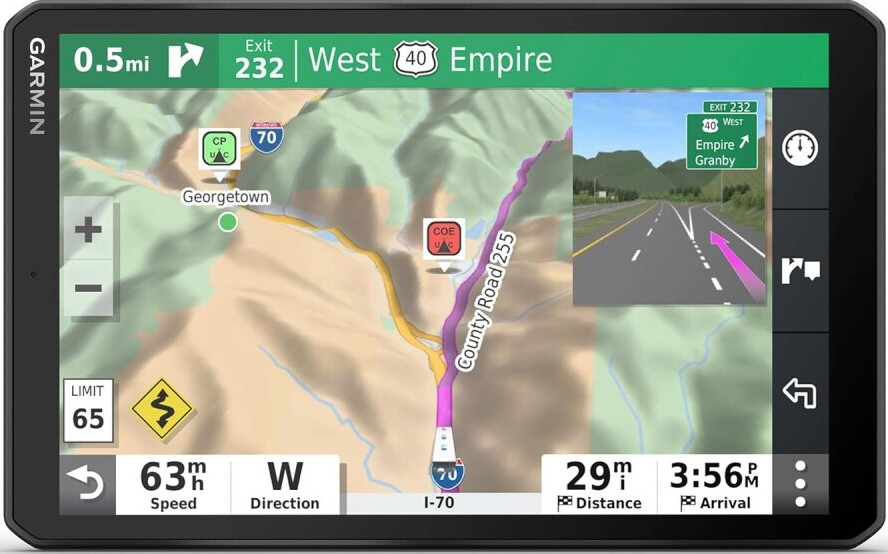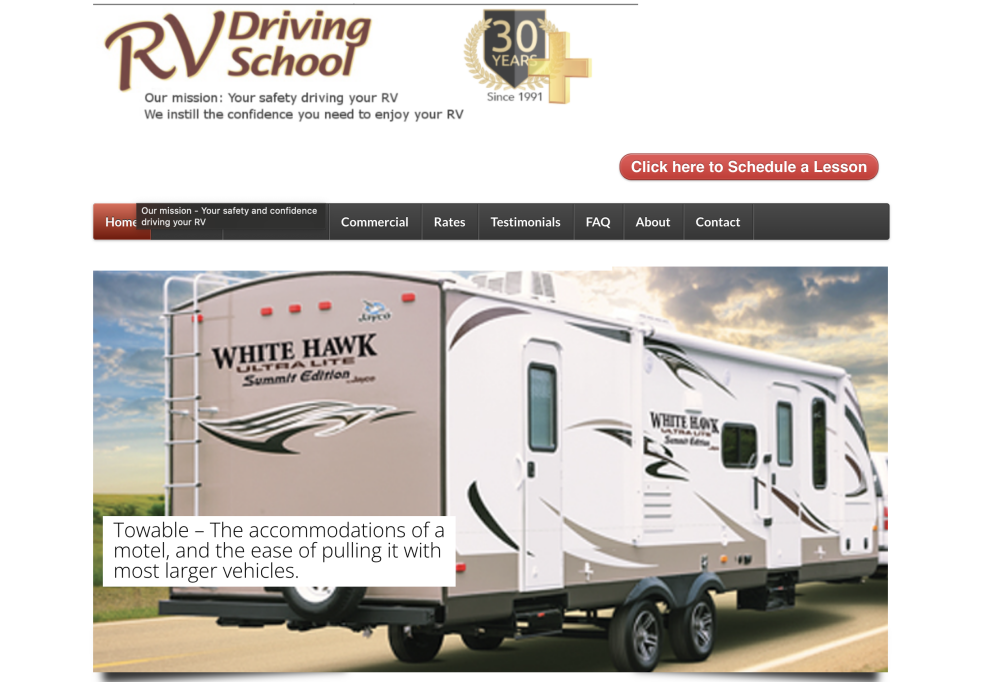Getting ready for a road trip in an RV involves more than just packing your bags. It’s crucial to know your RV’s dimensions by heart. Keep a visible note of the vehicle’s height, width, and length on your dashboard or near the driver’s seat. This will help prevent any unfortunate incidents like striking low bridges. Access RV-specific tools like GPS apps to avoid routes not designed for your vehicle. Apps like Roadtrippers and RV Life (RV Trip Wizard) can be a lifesaver by helping you find RV-friendly amenities and plan detours around low-clearance areas.

Before placing anything inside, think about the weight distribution. Unbalanced loads can affect the way the vehicle handles, potentially leading to dangerous situations. Make sure heavy items are stored low and secure everything so it doesn’t shift while driving. This attention to weight helps a lot when you’re making turns or stopping suddenly.
Speaking of stopping, understanding your RV’s fuel range is vital. Knowing how far you can travel on a tank, especially with a trailer hitched, might save you from getting stranded in the middle of nowhere. Always plan your fuel stops in advance. It gives peace of mind and lets you enjoy the journey without stress.
Conducting Comprehensive Vehicle Checks Before Hitting the Road
Exterior Inspection – Giving your RV a thorough once-over before hitting the road isn’t just smart—it’s necessary. Start with the exterior. Tires often get overlooked but are critical for a safe ride. Check the tire pressure and tread before every trip, and think about investing in a tire pressure monitoring system. It’ll catch issues before they become full-blown problems.
Lights – Make sure all your RV lights are working properly—blinkers, taillights, headlights. This isn’t just about legal requirements; it’s essential for visibility and safety.
Fluids – Fluid levels are another crucial part of your pre-trip checklist. Check the coolant, brake fluid, oil, and other levels to avoid any mechanical hiccups. This quick step could prevent you from ending up stuck on the roadside.
Propane Check – Propane systems require special attention. Fill your tanks, always check for leaks, and ensure that all vents are clear. A small leak can lead to big headaches if not caught early on.
Interior – Lastly, secure all doors, hatches, and compartments. Verify that anything that can swing open while driving is locked and that any accessories you’re bringing along are stored safely. Inside, ensure all your cargo is secure, your mirrors adjusted, and your driver’s seat is set for clear lines of sight. These preparations make a big difference in how comfortable and safe your trip will be.
Building Confidence with Key RV Driving Techniques
Starting confidently behind the wheel of an RV isn’t just about handling a larger vehicle—it’s about understanding new driving dynamics completely. Begin with practicing in a spacious, empty parking lot. This will help you get comfortable with maneuvering, turning, and parking. Developing these basic skills somewhere safe will build your confidence.
The 3-3-3 rule is a handy guide for newcomers to RV travel. It stands for driving no more than 300 miles a day, stopping by 3 PM, and staying in each place for at least 3 days. This reduces stress and makes the journey more enjoyable. It’s a reminder that RV travel is about the experience, not the destination. This is a perfect world situation. Many RV travelers, for many reasons have to deviate from this plan.
Keep to the right lane on highways. This lane tends to be slower and provides more space to navigate turns and off-ramps. While driving, keep a hefty distance between yourself and the vehicle in front. This extra gap is crucial for safety, as RVs need more time to stop due to their weight.
Braking requires some adjustment. Allow extra time and distance when stopping, and consider downshifting to reduce wear on your brakes. This is especially important when descending steep roads or in heavy traffic.
Your itinerary should also include stops at truck stops for easier fueling. These locations are designed for bigger vehicles and provide the room needed to safely maneuver in and out. Aside from making fueling easier, this also reduces the risk of accidental damage at more cramped, regular gas stations. If you have a diesel motor you might want to consider the EPF Card from Open Roads.
Advanced Tips and Strategies for a Safe RV Experience
For those wanting to truly master RV driving, professional training can be incredibly beneficial. RV driving schools offer specialized lessons on backing, turning, and understanding the intricate operational details of your vehicle. These skills will not only boost your confidence but also enhance safety on the road.

Driving at night requires special attention. Make sure headlights are correctly aimed and windshields are clean. Reduced visibility demands slower speeds and increased vigilance. Extra caution pays off when driving under low-light conditions, particularly on unfamiliar roads.
Having a well-prepared emergency plan could save a lot of trouble. Before setting off, identify service stations and RV dealerships along your route. Knowing where help is available adds peace of mind and can be crucial in addressing unforeseen issues quickly.
Regular maintenance and pre-trip inspections should never be overlooked. Ensuring your vehicle is in top condition isn’t just a safety issue—it keeps your journey enjoyable and stress-free. Slow down, focus on the road and don’t rush your travels. After all, RVing is about soaking in the scenery and cherishing each moment of the journey.
About the Author
Jim has 3.5 years of experience living and traveling full-time in an RV. From “moochdocking” with family and friends to navigating the financial intricacies of RV life, he shares practical advice rooted in firsthand experience. His goal is to help fellow adventurers embrace the RV lifestyle with confidence and ease.

Thanks for the insightful article about road tripping in a RV. You’ve covered everything from load to the mechanics of the vehicle. I like the 333 rule. I’ve never heard of that. I must agree with the stopping after 3 hours of driving. I was doing a 6 hour drive home on my own and decided where I was going to stop. It was 3.5 hours into the drive and I must admit the last half hour was hard as I found it harder to concentrate. I don’t have a RV but your advice can be applied to any vehicle. So thanks a lot.
Thank you for your kind words and for sharing your experience! I’m glad you found the 333 rule helpful—it really does make a difference in staying safe and enjoying the journey. It’s true, these tips can be applied to any vehicle, especially when it comes to managing fatigue and maintaining focus on the road. That last half hour can be tough, and stopping earlier can make all the difference. I appreciate your feedback and hope you continue to have safe and enjoyable drives, whether in a car or maybe one day an RV! 😊 Safe travels!
This post provides excellent guidance for new RV owners aiming for safe and enjoyable travels. The emphasis on knowing your RV’s dimensions and utilizing specialized GPS tools like Roadtrippers or RV Life highlights the importance of route planning to avoid low-clearance roads and other hazards. These tips are invaluable for beginners.
Weight distribution advice is particularly noteworthy—properly securing heavy items and ensuring a balanced load not only enhances safety but also improves driving comfort. Additionally, the reminder to plan fuel stops and understand your RV’s fuel range is a practical tip that prevents unnecessary stress on the road.
The comprehensive pre-trip inspection checklist—covering tires, fluids, lights, and propane—ensures a safe start to every journey. Including these routine checks can save travelers from costly roadside breakdowns and increase overall confidence.
I also appreciate the practical driving tips, especially the 3-3-3 rule and advice on handling braking and night driving. These strategies ensure that the focus remains on enjoying the journey while prioritizing safety. This is a must-read for anyone new to RVing!
Thank you so much for your thoughtful and detailed feedback on my article! I’m thrilled to hear that you found the tips helpful and comprehensive. Safety and planning are indeed key to a smooth and enjoyable RV journey, especially for those new to this lifestyle.
I appreciate you highlighting the importance of route planning and the use of tools like Roadtrippers or RV Life. Avoiding low-clearance roads and other hazards is crucial, and having the right resources makes all the difference.
Weight distribution is often overlooked, so I’m glad to know that part resonated with you. A well-balanced load not only ensures safety but can truly enhance driving comfort, as you pointed out. And yes, fuel planning is such a simple yet essential part of reducing road trip stress—it’s one of those lessons you don’t forget once you’ve learned it the hard way!
I’m especially happy that you found the pre-trip inspection checklist and driving tips like the 3-3-3 rule helpful. Confidence and enjoyment go hand-in-hand with safety, and my goal is to make the learning curve for new RVers a little easier.
Thank you again for taking the time to share your thoughts. I’m sure other readers will appreciate your insights as well. Safe travels, and may your RV adventures be filled with great memories!